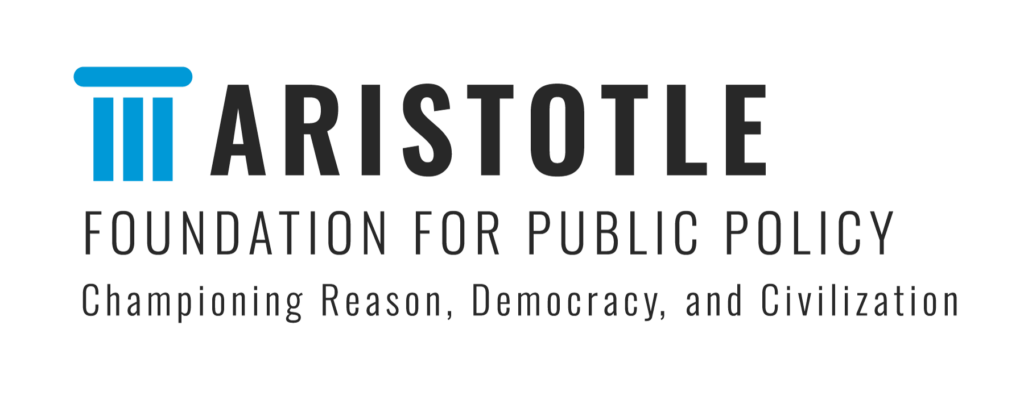
“Systemic racism is deeply entrenched in Canadian society. It is in our written and unwritten policies, our laws, public practices, beliefs, and systems” according to the Canadian Human Rights Commission (CHRC).1 Yet contrary to the CHRC’s claims, the following analysis shows definitively that the Canadian legal system is not “systemically” racist. Indeed, virtually every form of discrimination is legally prohibited—and has been for generations.
Canada is a nation governed by the rule of law. At the apex of our legal system is our Constitution: the supreme law of the land, structuring our legal and political systems. It is binding on all government bodies, including legislatures.
Part of the Constitution is the Canadian Charter of Rights and Freedoms,2 which came into effect in 1982 and unequivocally requires equality under the law. In other words, racism is neither entrenched nor systemic in Canada’s law or legal system. Section 15(1) of the Charter is clear:
Every individual is equal before and under the law and has the right to the equal protection and equal benefit of the law without discrimination and, in particular, without discrimination based on race, national or ethnic origin, colour, religion, sex, age or mental or physical disability.i
This provision, read together with other Charter provisions, makes it unlawful for government entities, including legislatures, to discriminate on practically any basis—most especially race, ethnicity, or colour. (The one notable exception is so-called “employment equity” or “affirmative action”, as specified and permitted in section 15(2) of the Charter and discussed below.)
Under section 24 of the Charter, the courts are given broad powers to enforce the rights under the Charter, including the rights enunciated in section 15(1). Anyone who is the victim of prohibited discrimination by government can apply to a court for redress.
But codifying colour-blindness did not start in 1982. Years before the Charter, Parliament and all provincial legislatures across Canada prohibited various forms of discrimination, as shown in figure 1 and the appendix table. The earliest of these bills was passed in 1913.
Figure 1: Timeline of the introduction of anti-discrimination legislation by jurisdiction

Before the 1960s, seven out of ten provinces had introduced anti-discrimination laws:
Federally, Parliament passed its first anti-discrimination legislation in 1953. The Fair Employment Practices Act stated that, “No employer shall refuse to employ… or otherwise discriminate against any person in regard to employment or any term or condition of employment because of his race, national origin, colour, or religion.”10
Then, in 1960, Parliament passed the Canadian Bill of Rights Act, which contained strong language that positioned it above all legislation except the Constitution.11 Section 1 of this federal legislation recognized and declared that in Canada individuals have the right to equality before the law without discrimination by reason of race, national origin, colour, religion, or sex. Like the Charter after it, this legislation applied to relations between governments and Canadians but did not extend to discrimination between private individuals and entities such as employers and employees.
However, in the private realm Canada also has a long statutory history of prohibiting citizens from discriminating against other citizens, in various contexts, based on various grounds. This includes not only the previously-mentioned federal legislation of 1953 prohibiting employers from discriminating against workers based on race, but also in 1956, the federal government restricted employers from employing a female for any work at a rate of pay that was less than the rate at which a male was employed by that employer for identical or substantially identical work.12
All of the provinces introduced human rights legislation before the Charter—the last of which was Quebec in 1975.ii This pre-Charter legislation applied both in the public and private realms. The earlier human rights legislation prohibited discrimination based on a limited list of attributes including race, colour, sex, age, religious beliefs, ancestry, or place of origin. In the intervening decades, the list of attributes has been expanded to include gender, gender identity, gender expression, sexual orientation, physical disability, mental disability, nationality, source of income, marital status, and family status.
The situations in which discrimination was originally prohibited were limited to such areas as employment, accommodation, and the provision of goods and services. In more recent decades, the contexts are pretty much limitless.
Although enforcement mechanisms under human rights legislation vary across the country, generally tribunals are set up with authority to receive complaints of discrimination and to grant remedies where discrimination is established. Most remedy provisions are extensive. Where a person is aggrieved by a private party, they may file a complaint with the appropriate authority. The authority may be federal or provincial, and complaints are investigated by the relevant authority. If accommodation cannot be reached between the parties, the complaint may proceed to a hearing. Depending on the nature of the complaint, and the process involved, the courts may also become involved. The point is this: There is legal recourse for anyone who has been discriminated against on a prohibited ground.
There is one form of discrimination, however, that Canadian law tolerates. Reverse discrimination is permitted under section 15(2) of the Charter. Hence, in one sense, systemic discrimination does exist where the “law, program or activity… has as its object the amelioration of conditions of disadvantaged individuals or groups including those that are disadvantaged because of race, national or ethnic origin, colour, religion, sex, age or mental or physical disability.” As Mark Milke notes in The Victim Cult, and without endorsing ethnic, racial, and gender quotas and/or other forms of reverse discrimination:
To be sure, some present-day policies are illiberal and imperfect now in their own right: preferential race and gender hiring preferences, for examples. But those are… the opposite of anti-minority racism and prejudice given that their very purpose, right or wrong, is to ameliorate the effects of past discrimination upon minorities.13
Weighing the merits and demerits of that newer form of discrimination is beyond the scope of this paper, but the evidence is clear: With the exception of what is known as “employment equity” in Canada (or “affirmative action” in the United States), under our legal system, there is no systemic racism or other form of systemic discrimination in Canada aimed at minority populations or women. Indeed, such discrimination is illegal.
But what about systemic discrimination in other areas? Some will point to disparities in income or the greater likelihood for some groups to experience poverty as proof that Canada is racist. To assume that discrimination is the reason for all differences in outcomes between ethnic cohorts is simplistic analysis because it assumes a mono-causal reason for observed effects: racism, real or assumed, is assumed to explain all or most outcomes including disparities between cohorts. However, when multiple variables are considered, such as education levels, geography, family, and cultural differences, to name but a few, it becomes clear that differences among people have many causes. For instance, indigenous and non-indigenous Canadians with equal credentials earn around the same annual incomes; in fact, indigenous Canadians with more than a bachelor’s degree make more money, on average, than other Canadians with the same level of education.14 Likewise, race is a poor predictor of poverty in Canada. Not only are there more “white” Canadians in poverty than all other ethnicities combined, but amongst all Statistics Canada cohorts—including indigenous and black Canadians—the overwhelming majority (over 80 percent) are above the poverty line.15
Does this mean there are no bigots or racists in Canada? Unfortunately, such people do exist, but their existence does not a system make. By analogy, we have criminal laws in Canada under which certain defined conduct is prohibited. These laws are broken from time to time. Canada has criminals, but this does not make Canada a systemically criminal state.
The claim that Canada’s present-day laws and legal system are systemically racist is unfounded. Government bodies, private entities, and individuals are prohibited in Canada from discriminating against anyone in virtually every context, as a matter of law. This is not new but has been true for generations, beginning as early as 1913 and culminating in the 1960 Bill of Rights. What is novel is one sole exception. In 1982, the Charter of Rights and Freedoms opened the way for reverse discrimination, which favours groups that are either perceived to be or historically were at a disadvantage. In other words, there is one form of systemic discrimination in Canada, but its advocates are attempting to justify new discrimination based on past discrimination. Such reasoning is faulty and should be the subject of further analysis by all who aim at equal opportunity for all.
Timothy Platnich is a senior fellow at the Aristotle Foundation for Public Policy and a former litigator. Before retiring from 34-years of practicing law, Platnich was one of two managing partners at Caron & Partners in Calgary. He appeared before all levels of court in Alberta and in the Tax Court and Federal Court of Canada.
Danny Randell is a researcher at the Aristotle Foundation for Public Policy. Randell is a Master of Public Policy candidate from the University of Calgary and holds a Bachelor of Arts in History from Ambrose University.
David Hunt is the research director at the Aristotle Foundation for Public Policy. Hunt holds a Master of Public Policy from Simon Fraser University and a Bachelor of Business Administration (with distinction) from Kwantlen Polytechnic University where he was the Dean’s Medal recipient and is now a part-time faculty member.
Who we are
The Aristotle Foundation for Public Policy is a new education and public policy think tank that aims to renew a civil, common-sense approach to public discourse and public policy in Canada.
Our vision
A Canada where the sacrifices and successes of past generations are cherished and built upon; where citizens value each other for their character and merit; and where open inquiry and free expression are prized as the best path to a flourishing future for all.
Our mission
We champion reason, democracy, and civilization so that all can participate in a free, flourishing Canada.
Our theory of change: Canada’s idea culture is critical
Ideas—what people believe—come first in any change for ill or good. We will challenge ideas and policies where in error and buttress ideas anchored in reality and excellence.
Donations
The Aristotle Foundation for Public Policy is a registered Canadian charity and all donations receive a tax receipt. To maintain our independence, we do not seek nor will we accept government funding. Donations can be made at www.aristotlefoundation.org.
The Aristotle Foundation for Public Policy has internal policies to ensure research is empirical, scholarly, ethical, rigorous, honest, and contributes to the advancement of knowledge and the creation, application, and refinement of knowledge about public policy. Our staff, research fellows, and scholars develop their research in collaboration with the Aristotle Foundation’s staff and research director. Fact sheets, studies, and indices are all peer-reviewed. Subject to critical peer review, authors are responsible for their work and conclusions. The conclusions and views of scholars do not necessarily reflect those of the Board of Directors, donors, or staff.

The logo and text are signs that each alone and in combination are being used as unregistered trademarks owned by the Aristotle Foundation. All rights reserved.
The Aristotle Foundation for Public Policy is a registered Canadian charity. Our charitable number is: 78832 1107 RR0001.
SUBSCRIBE TO OUR NEWSLETTER